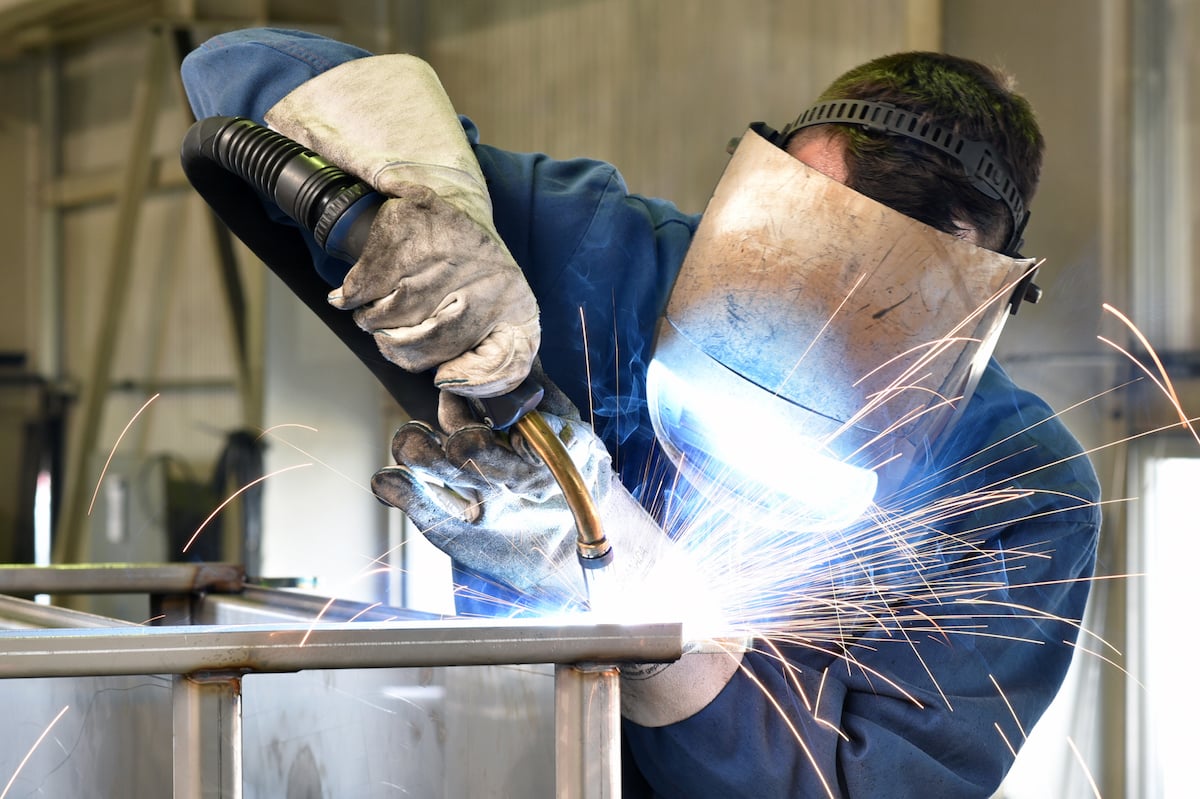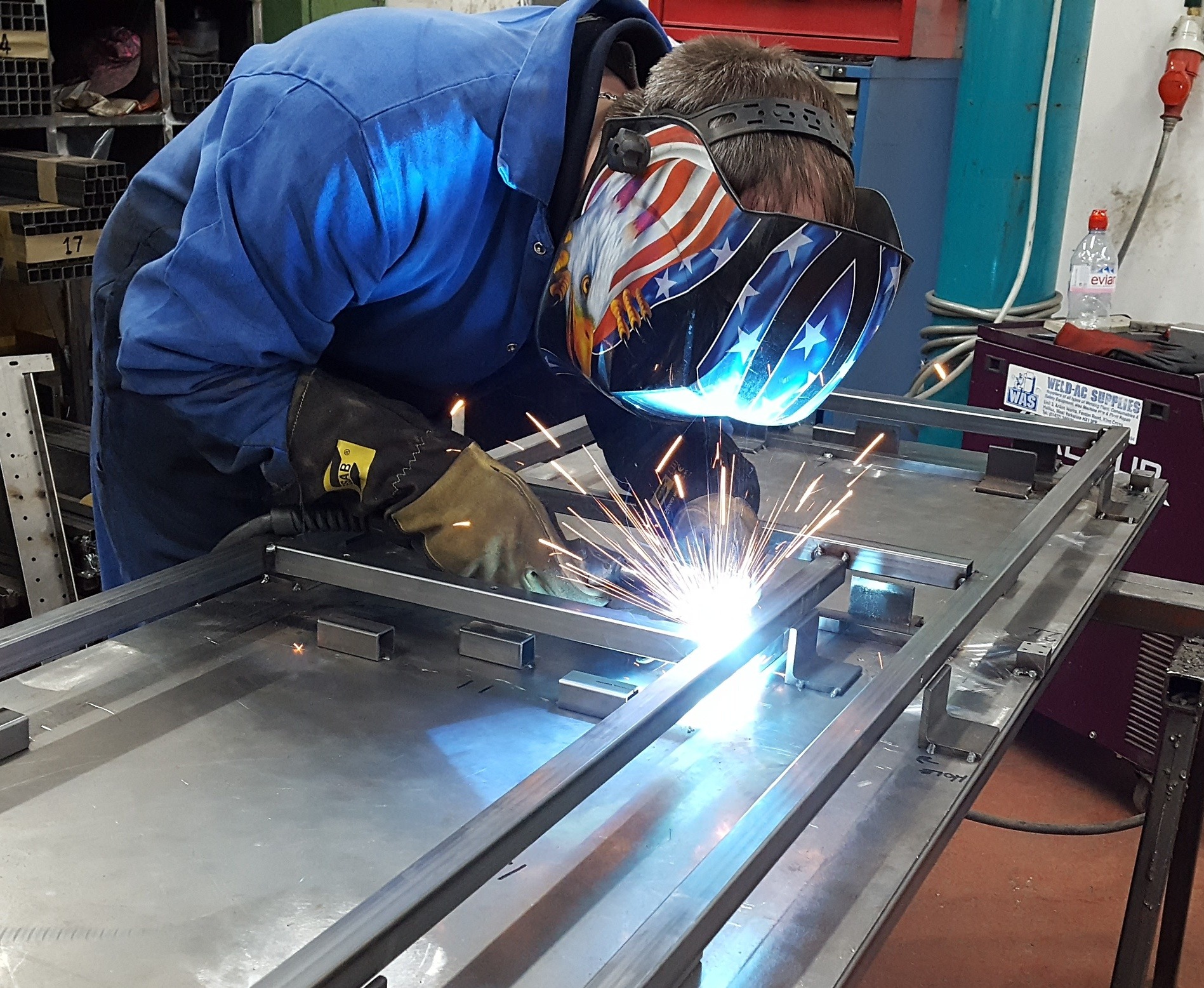All Regarding Welding: Secret Insights Into Techniques and Ideal Practices for Success
Welding includes a range of strategies, each suited for details products and applications. Understanding these approaches, such as GMAW, SMAW, and TIG, is necessary for attaining excellent results. In addition, the ideal devices and safety techniques can not be ignored. As prep work and fixing play crucial duties in the welding procedure, mastering these elements can considerably enhance the quality of the final product. What are the key factors that ensure a successful weld?
Understanding Different Welding Strategies
Welding techniques include a selection of approaches, each fit to certain applications and products. Among the most common methods are Gas Metal Arc Welding (GMAW), Shielded Metal Arc Welding (SMAW), and Tungsten Inert Gas Welding (TIG) GMAW, also referred to as MIG welding, is popular for its rate and adaptability, making it suitable for thin products. SMAW, or stick welding, is favored for its simpleness and effectiveness in outside settings, especially with thicker steels. TIG welding provides accuracy and control, making it suitable for detailed work and non-ferrous steels (Montana Mobile Welding and Repair Welding). Each strategy has its one-of-a-kind advantages and factors to consider, permitting welders to choose the best approach based upon the job's requirements, material type, and wanted end results. Understanding these strategies is important for successful welding
Necessary Welding Tools and Tools
While different welding methods need details abilities, the ideal devices and devices are similarly crucial for accomplishing high quality results. Important welding devices includes welding devices, which differ depending upon the method-- such as MIG, TIG, or stick welding. Protective gear, consisting of handwear covers, aprons, and safety helmets, warranties safety and comfort throughout the process. Furthermore, clamps and components help protect materials in position, guaranteeing accuracy in welds. Consumables like welding poles, wire, and securing gas are likewise critical elements that influence the high quality of the weld. Moreover, tools such as cutters and grinders help with surface area prep work and post-weld completing, adding to a specialist result. Spending in top quality devices ultimately enhances the efficiency and effectiveness of welding jobs.
Security Practices in Welding
Appropriate safety and security methods are important in the welding market to shield workers from potential threats. Welders need to put on proper individual protective devices (PPE), consisting of helmets with appropriate shading, handwear covers, and flame-resistant apparel. Sufficient air flow is vital to decrease exposure to dangerous fumes and gases produced throughout the welding procedure. Additionally, employees should be trained in the proper handling of welding devices to stop crashes. Fire safety actions, such as maintaining flammable materials away from the welding location and having fire extinguishers readily offered, are necessary. Regular inspections of devices and workspaces can help recognize potential dangers prior to they result in crashes. By sticking to these safety practices, welders can create a much safer working environment and minimize risks related to their trade.
Preparing Products for Welding
Preparing products for welding is a vital action that considerably affects the high quality and integrity of the end product (Fabrication). Correct preparation involves cleaning up the surfaces to eliminate pollutants such as oil, dust, and corrosion, which can compromise the weld. Methods such as grinding, sanding, or making use of solvents are typically employed to accomplish a tidy surface. Additionally, making sure that the products fit with each other comfortably is vital; spaces can bring about weak welds. It's also essential to take into consideration the alignment and positioning of the elements, as this will impact the convenience of welding and the final end result. Finally, choosing the ideal filler product and guaranteeing compatibility with the base metals is important for achieving solid, durable welds
Tips for Getting High-Quality Welds
Achieving high-grade welds requires focus to information and adherence to ideal techniques throughout the welding process. Proper joint preparation is essential, making certain surface areas are cost-free and tidy from impurities. Choosing the proper filler material and welding strategy based on the base metals is critical for optimal bonding. Preserving consistent travel rate and angle while welding can promote and avoid flaws harmony. In addition, controlling heat input is vital; extreme heat can lead to warping and compromised joints. Regularly evaluating the welds throughout the procedure permits prompt changes if needed. Finally, using ideal post-weld therapies, such as cleansing and tension relief, can improve the toughness and stability of the weld, ultimately ensuring an effective outcome.
Troubleshooting Usual Welding Issues
Welding usually offers difficulties that can affect the quality and stability of the end product. Usual problems such as porosity, inconsistent weld beads, and overheating can arise, each calling for specific repairing methods. Recognizing these troubles is essential for welders to boost their abilities and achieve perfect results.
Porosity Troubles Discussed
Although porosity can typically be neglected, it remains a critical issue in welding that can jeopardize the honesty of a completed item. Porosity describes the existence of little gas pockets within the weld grain, which can lead and deteriorate the joint to premature failure. This issue typically occurs from pollutants, moisture, or incorrect shielding gas protection during the welding procedure. To reduce porosity, welders ought to validate that the base products are completely dry and clean, make use of proper securing gases, and maintain constant welding specifications. Consistently examining the tools and atmosphere can additionally help identify possible concerns before they materialize in the weld. Attending to porosity effectively is crucial for accomplishing strong, durable welds that fulfill high quality requirements.

Inconsistent Weld Beans
Inconsistent weld beads can substantially impact the top quality and stamina of a completed item. Various elements contribute to this issue, consisting of incorrect travel rate, inaccurate amperage setups, and irregular electrode angles. When the welder moves also our website quickly, a bead might appear narrow and lack infiltration, while moving as well slowly can cause excessive buildup. In addition, using the wrong amperage can cause either damaging or excessive spatter, both of which concession weld stability. The welder's strategy, such as irregular torch activity, can also bring about unequal bead appearance. To mitigate these troubles, welders ought to concentrate on maintaining consistent, controlled motions and making certain proper devices setups to accomplish uniformity in their welds. Uniformity is key to attaining reliable and solid welds.
Getting Too Hot and Bending Issues
Excessive warm during the welding process can bring about significant getting too hot and deforming concerns, influencing the architectural integrity of the workpiece. These problems frequently show up as distortion, which can compromise positioning and fit-up, making more assembly challenging. Variables adding to overheating consist of the choice of welding specifications, such as voltage and travel rate, as well as the sort of product being welded. To reduce these concerns, welders must keep regular traveling rate and suitable warm input while monitoring the workpiece temperature. In addition, pre-heating or post-weld warm treatment can aid minimize stress and anxieties brought on by fast cooling - Montana Mobile Recommended Reading Welding and Repair Belgrade Welding. Normal evaluation and adherence to finest methods are essential in avoiding getting too hot and making sure the long life and integrity of bonded frameworks
Regularly Asked Questions
What Are the Career Opportunities in the Welding Market?
The welding market offers varied occupation possibilities, consisting of positions as welders, instructors, inspectors, and designers. Specialists can operate in production, construction, aerospace, and automotive sectors, profiting from strong need and affordable incomes in numerous roles.
Exactly How Can I Boost My Welding Rate Without Compromising High Quality?
To improve welding rate without compromising quality, one need to exercise effective techniques, keep equipment, optimize settings, and boost hand-eye coordination. Regular training and seeking comments can likewise considerably contribute to achieving faster, top quality welds.
What Qualifications Are Readily Available for Welders?
Various certifications exist for welders, including those from the American Welding Culture (AWS), the National Facility for Building And Construction Education And Learning and Study (NCCER), and various industry-specific organizations. These qualifications enhance employability and show skill efficiency.
How Does Welding Impact the Residences of Metals?
Welding influences the homes of metals by changing their microstructure, which can lead to adjustments in strength, firmness, and ductility. Warmth input and cooling prices during the process greatly impact these material characteristics.
Can I Weld Dissimilar Metals Together?
